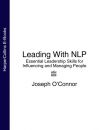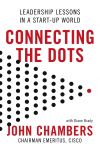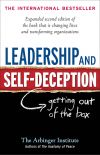Правообладателям!
Представленный фрагмент книги размещен по согласованию с распространителем легального контента ООО "ЛитРес" (не более 20% исходного текста). Если вы считаете, что размещение материала нарушает ваши или чьи-либо права, то сообщите нам об этом.Читателям!
Оплатили, но не знаете что делать дальше?
Текст бизнес-книги "Edge: Leadership Secrets from Footballs’s Top Thinkers"
Автор книги: Ben Lyttleton
Раздел: Жанр неизвестен
Текущая страница: 1 (всего у книги 1 страниц)

COPYRIGHT
HarperCollinsPublishers
1 London Bridge Street
London SE1 9GF
www.harpercollins.co.uk
First published by HarperCollinsPublishers 2017
SECOND EDITION
© Ben Lyttleton 2017
Cover layout design by Steve Leard
Cover photograph © Shutterstock
Athletic Club de Bilbao plaque poem © Kirmen Uribe
Exploratory Behaviour Frequency charts © G. Jordet, J. Bloomfield & J. Heijmerikx
A catalogue record of this book is available from the British Library
Ben Lyttleton asserts the moral right to be identified as the author of this work
All rights reserved under International and Pan-American Copyright Conventions. By payment of the required fees, you have been granted the nonexclusive, non-transferable right to access and read the text of this e-book on screen. No part of this text may be reproduced, transmitted, downloaded, decompiled, reverse engineered, or stored in or introduced into any information storage retrieval system, in any form or by any means, whether electronic or mechanical, now known or hereinafter invented, without the express written permission of HarperCollins e-books.
Find out about HarperCollins and the environment at
www.harpercollins.co.uk/green
Source ISBN: 9780008226398
Ebook Edition © September 2017 ISBN: 9780008225889
Version: 2018-02-05
DEDICATION
To ABC, with love
CONTENTS
Cover
Title Page
Copyright
Dedication
Prologue
1 Cohesion
2 Adaptability
3 Decision-Making
4 Resilience
5 Creativity
Epilogue
Notes
Bibliography
Acknowledgements
Index
About the Author
About the Publisher
PROLOGUE
As soon as I took the call, I knew it was a great idea. It was summer 2014 and I had just spoken to Marcus Christenson, Football Editor at the Guardian newspaper. His plan was to tap into the football expertise of his global network and publish a piece called ‘Next Generation’. It would identify the top 60 players around the world aged 17 or below.
The feature would run every year, and readers would be able to track previously listed players and check on their progress. It was also quite brave, because if, in three years, say, 55 of the 60 players named had dropped out of football, no one would look too clever.
He asked me to come up with two players who were based in France. I have always been enchanted by French football and have written extensively about the game there. But I did not know all that much about the next generation, and when it came to that age group, it was more like the generation after next.
I called up some of my contacts in the French game and they helped me draw up a shortlist of five names. I had to narrow it down. I looked at video footage of the players but that didn’t help; they all played in different positions anyway. So I went back to Marcus and asked what he wanted. Was it the most talented players? Or the ones most likely to make it? He wanted both: basically, a feature that would become an annual celebration of the Guardian’s football knowledge pool. ‘We just want to get it right,’ he said.
This made me think. Would the most talented players be the ones most likely to make it? I asked a friend, a Premier League scout whose speciality was spotting youth-team players in northern France. ‘Not at all,’ he replied. He was looking for players who influence games, whatever their position. This is not just a matter of technique or skill; it’s about working off the ball, and how they react to losing the ball.
So what is he looking for? ‘Resilience,’ he said. Most scouts focus on the six seconds after a player loses the ball to check for reaction, but my friend keeps an eye on them for ten minutes. One youngster missed a chance to score and spent the rest of the half shaking his head and hitting his thigh in disgust with himself. He was crossed off the list. ‘He was nervous when he next got the ball and he won’t grow out of that.’
He also talked about adaptability: how a player fits in socially with those around him, and extrapolated that to the potential new contexts that might await him. It was also important that he had a general respect for team-mates and the coach, and a simple enjoyment of the game. ‘You can spot the ones who don’t want to be there a mile off.’ There is a lot more to his job than interpreting body language and the odd behavioural trait. But he made it clear just how many aspects there are to assessing talent.
This was my chance to have a go at it. I had five players whose talent was not in question. Four had been capped by France at Under-17 level, and they were all playing in academies with a good record of bringing players through: Toulouse, Lens, Valenciennes, Rennes and Paris Saint-Germain. I had to narrow it down to two names.
I made more calls and this time was specific about my questions. ‘What’s his attitude like? How does he react to difficult situations? How motivated is he? Does he get on well with people? Is he adaptable?’ There was a lot more fluctuation in the answers to these questions.
The difference in the talent that I could see between these five players was minimal. But there was a big gap in the talent I could not see. Some of it was talent you cannot even measure. How can you tell how motivated someone is, or what their decision-making is like under pressure? What about their adaptability to a new social group, or how they react, not just to defeat, but also to success? These elements all factored in attributes above the shoulder. They could be the difference between making it and not making it.
As I went through the questions about each player – asking about attitude, teamwork, motivation, adaptability, resilience and creativity – I realised these skills were not just relevant in the football world. They make the difference in any professional environment. Talent is the starting-point, but these are the elements that give you an edge. That’s what I was looking for. They all had talent. Which ones had the edge?
I was finally ready to send my names to Marcus. One was Jean-Kévin Augustin, a 17-year-old striker waiting for a first-team opportunity at Paris Saint-Germain. The other was also 17 and had not yet made a first-team appearance for his club. He was in the youth academy at Rennes. He was a winger. His name was Ousmane Dembélé. I will come back to his story.
We can all agree that football and business are not the same. Your company will not release its results every three days. The local, national, and sometimes international, media won’t pore over every decision you or your colleagues make. The weather is unlikely to affect your performance. The visual acuity of one man who could be 30 yards away won’t become a defining moment in your life. Or at least, for your sake, I hope not.
In football, only one team can win the league. In football, managers spend a lot of time thinking and talking about the competition. They change strategies according to the opponent. Most businesses focus on the customer instead.
Then there is the performance itself. In what business do you spend only 5 per cent of your time performing, and the rest of the time developing your skills? If you’re lucky, it might be the other way around. Most of us spend 99 per cent of our time on performance, and maybe 1 per cent on self-improvement.
To see how different business is from football you only need to look at the people who straddle both. The game is littered with highly successful businessmen who buy a football club and somehow take leave of their senses. They make crazy decisions. The heart takes over the head. Emotion trumps logic.
In my role working for Soccernomics, a consultancy named after the book of the same name, I have had conversations with the sporting side (coaches, scouts) and with the management side (chief executives, heads of finance) about players. Soccernomics works with club owners, helping them avoid expensive mistakes in the transfer market. I have listened to these people dissect running styles, crossing ability and ball control. Football has traditionally quantified talent through a rear-view mirror: looking at goals, tackles and passes. New data measures distance run, sprints made, speeds clocked, time on the ball, position on the pitch and even expected goals scored. In sport’s era of big data, they are just the tip of the iceberg.
Clubs measure the precise contribution of an individual to his team’s chances of scoring in a given game. One club wants versatile players and uses analytics to track exactly what percentage of games over a season a certain target might play in different positions. A centre-back who can fill in at full-back, or a defensive midfielder who can push forward, or a wide player who can move into the hole: these are all highly coveted players whose value to a team in being able to cover for more than one position is helpful. Another likes to know the difference between the market valuation of its targets (what clubs will pay) and the intrinsic valuation, a calculation based solely on his output on the pitch. Every club looks for different Key Performance Indicators to develop their winning team.
But how do you measure what the eye cannot see? The biggest talents in football share characteristics that are harder to quantify. The skills of those who provide the real edge are intangible: adaptability, resilience, leadership, decision-making, composure under pressure, motivation, creativity, teamwork. These are the qualities I was looking for when I was scouting for the talented French youngsters.
In this book, I have spent time with clubs who actively identify and develop these traits in their players. They understand that the best results come from thinking about what the eye cannot see. They revealed to me how they get an edge. And you can do the same.
An edge is not a sporting term. It’s a competitive advantage, and just as relevant in any professional environment. You are no longer competing with people in your city anymore, but globally. New businesses are disrupting the landscape and changing outlooks. This book will give you tools to respond to these challenges.
Football offers solutions. Jorge Valdano, a former Real Madrid player and coach, who won the 1986 World Cup with Argentina, gave me a unique insight into how to unlock creativity and work with mavericks. He put it best, saying: ‘Ultimately, football is just a metaphor for life.’
It’s about time that other industries took this metaphor seriously. Over 250 million people play football. It’s the most popular sport in the world. Every professional footballer has got past millions of competitors to reach that point. One sports psychologist has calculated that the performance level of players in the Champions League is in the top 0.0001 per cent. That is a narrow elite of specialists that any professional would want to learn from. This book will give you the framework to do just that.
The need to identify and develop talent is crucial to success. This becomes a fascinating challenge when, as I discovered, every coach, sports director or club owner has a different definition of the word ‘talent’. How clubs go about optimising their talent is the perfect lens through which we can discover our attitude towards talent and what this means for us.
I know one successful chief executive who puts this into practice. He set up a media business from scratch in 2014. It started with two people and no office. Less than three years later, he manages over 50 staff and has a turnover of over £10 million. How did he do it? ‘In all seriousness,’ he tells me, ‘I base my management style on the coach of my favourite Premier League team. He keeps his messages simple but leaves no one in any doubt about what they need to do; he communicates regularly and with a lot of one-on-ones; he focuses on retaining talent by improving his employees rather than hiring in new people.’
He sees his company’s workforce as no different to a sports team, and mentions only a few of the factors that can give you an edge. This book will help you get the best out of your talent, and that of those around you.
I visited the football clubs that have identified new ways to quantify these intangible skill-sets. I’m grateful to all the experts in top-level football that gave me their time and expertise in my quest for an edge. I spoke to club and national team coaches, sporting directors and club psychologists; players, heads of talent identification and performance coaches; heads of academy, club owners and professors. I spoke to World Cup winners, European championships winners and league title winners. I even spoke to one club’s ‘cultural coach’.
Football is the most hot-housed, intense and financially profitable talent factory on the planet. It’s time we woke up to the lessons it can provide. We all want to have an edge. This is your chance to find one.
Ben Lyttleton
August 2017
London
Внимание! Это ознакомительный фрагмент книги.
Если начало книги вам понравилось, то полную версию можно приобрести у нашего партнёра - распространителя легального контента ООО "ЛитРес".Правообладателям!
Представленный фрагмент книги размещен по согласованию с распространителем легального контента ООО "ЛитРес" (не более 20% исходного текста). Если вы считаете, что размещение материала нарушает ваши или чьи-либо права, то сообщите нам об этом.Читателям!
Оплатили, но не знаете что делать дальше?







